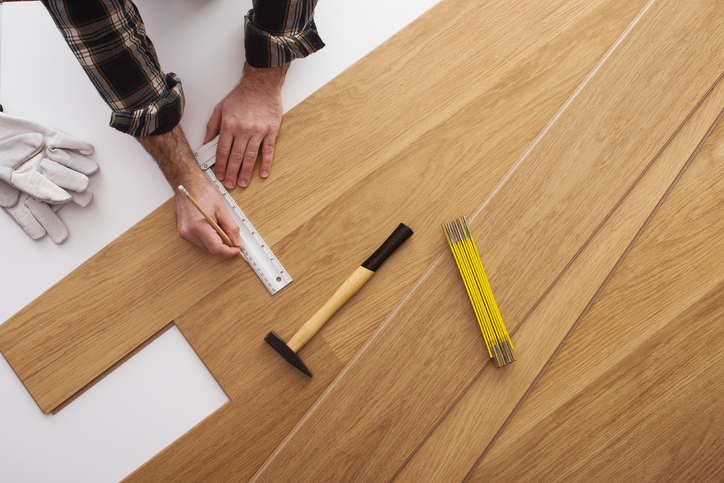
Putting in a New Floor? Use This Checklist
If a new floor is in your future, proper planning is key to a successful outcome. Use the following checklist from Consumer Reports to ensure you’re making the best choice for both functionality and fashion.
1. Slow down and sample. While you may think you know exactly what you want, take the time to test out several samples in the room you’re reflooring. When you compare them side-by-side, you may change your mind.
2. Compare for consistency. While manufacturers try to match solid- and engineered-wood flooring for color and grain, variations occur from batch to batch, so make sure you buy all the flooring you need at one time.
3. Measure right. Consumer Reports offers the following formula to ensure you buy the right amount of flooring: measure the room’s square footage by multiplying its length times its width. Flooring an odd-shaped room? Divide it into smaller rectangles, calculate the square footage of each rectangle, and then add them together. Then play it safe: buy 7 - 10 percent more than you need, and maybe an extra box for future repairs or additions.
4. Consider traffic. High-traffic areas such as entryways, kitchens and family rooms will require durable flooring. Consider engineered wood or attractive bamboo floors for less-busy areas.
5. Prepare for install. Consumer Reports recommends unpacking wood or laminate flooring and letting it sit for 1 - 3 days. This will help its temperature and moisture become acclimated to the levels in the room.
6. Certification matters. The FloorScore certification on vinyl floors means it emits relatively low levels of volatile organic compounds. For wood flooring, look for certification from the Forest Stewardship Council and the Sustainable Forestry Initiative, which means the wood came from responsibly managed forests.
Source: Consumer Reports
For more flooring tips, contact me today.
1. Slow down and sample. While you may think you know exactly what you want, take the time to test out several samples in the room you’re reflooring. When you compare them side-by-side, you may change your mind.
2. Compare for consistency. While manufacturers try to match solid- and engineered-wood flooring for color and grain, variations occur from batch to batch, so make sure you buy all the flooring you need at one time.
3. Measure right. Consumer Reports offers the following formula to ensure you buy the right amount of flooring: measure the room’s square footage by multiplying its length times its width. Flooring an odd-shaped room? Divide it into smaller rectangles, calculate the square footage of each rectangle, and then add them together. Then play it safe: buy 7 - 10 percent more than you need, and maybe an extra box for future repairs or additions.
4. Consider traffic. High-traffic areas such as entryways, kitchens and family rooms will require durable flooring. Consider engineered wood or attractive bamboo floors for less-busy areas.
5. Prepare for install. Consumer Reports recommends unpacking wood or laminate flooring and letting it sit for 1 - 3 days. This will help its temperature and moisture become acclimated to the levels in the room.
6. Certification matters. The FloorScore certification on vinyl floors means it emits relatively low levels of volatile organic compounds. For wood flooring, look for certification from the Forest Stewardship Council and the Sustainable Forestry Initiative, which means the wood came from responsibly managed forests.
Source: Consumer Reports
For more flooring tips, contact me today.


